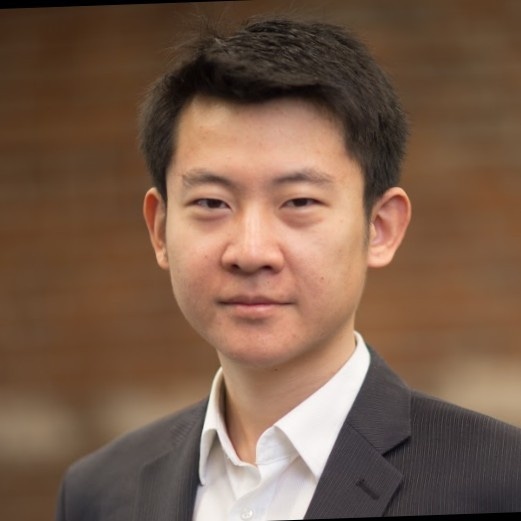
Connects decision-makers and solutions creators to what's next in quantum computing
Q&A with Zapata CTO and co-founder Yudong Cao

Zapata chief technology officer and co-founder Yudong Cao talked to Enter Quantum about the company’s predictions for the year ahead, post-quantum cryptography and the competitive advantage that even preparing to introduce quantum computing can offer.
Zapata Computing is a Boston-based quantum software company that offers hardware-agnostic computing solutions for industrial and commercial use.
Its partners include Fortune 100 companies in areas including chemistry, material, finance, consumer goods and automotive including BP, BBVA, BASF, Coca Cola and, more recently, Andretti Autosports and DARPA.
The company released its second annual report on Enterprise Quantum Computing Adoption in December. Among other findings, the study found that 6% of enterprise leaders are already claiming a competitive advantage from adopting quantum computing, 30% expect an advantage within one year and 46% within one to five years.
Enter Quantum: Earlier this year, Zapata released its second annual report on enterprise quantum. As the industry is yet to achieve commercial quantum computing, how do you predict enterprise quantum will grow this year?
Yudong Cao: There are intermediate things to do in the near term that are incredibly interesting. The quantum readiness journey involves many components. One of them is to set up the infrastructure so that when you do have a quantum computer or a quantum algorithm that yields exponential speed up, the advantages you gain from quantum computers are not overwhelmed by issues with infrastructure or the overhead of preparing data or post-processing the data.
Global enterprises have typically existed for decades and have stacks of tools that have accumulated over an extended period of time. You have different versions of the same tool, often coexisting and there are often issues with legacy systems – the technical debts – and they have dependencies that are not resolved.
In the middle of all of that, there's the complexity in the type of application that enterprises have, but also the type of data they have. In every level of abstraction, you have this multiplicity accumulated over the enterprise's evolution, and then you throw quantum into that mix. That's an extra headache for the CIO to figure out how to prepare for.
But it's an exercise that's independently useful. Once the enterprise is quantum-ready, the IT infrastructure is at a level of maturity to be ready for accepting other exotic computing options.
Is there a competitive advantage to early adoption?
Different companies have different risk tolerance when it comes to being an early adopter versus a fast follower. There's a separation between the build versus buy versus partner positions. We have customers like BP, BASF and BBVA that are not only early adopters, but are also building internal teams for quantum research. DARPA is a supporter of funding for quantum for the U.S. government. So, in different ways, the early adopters are either putting money or people forward to actually do this.
Are artificial intelligence and machine learning likely to drive quantum adoption over the next few years?
Yes, and we can also broaden what we mean by quantum computing to these quantum-related classical techniques like tensor networks. If we include that into the scope of what we refer to as quantum computing then yes, there's going to be increasing demand for it, especially in the era of those generative models, where the number of parameters in the model grows exponentially.
As time goes by, more improvements are needed for those generative models, which is a prohibitive bottleneck for enterprises to adopt some of the cutting-edge models like GPT3, for instance. Those are already too expensive and, in many cases, not necessary; enterprises can probably get away with GPT2, which can reasonably process things like legal documents. You don't need a chatbot that can write you a whole poem about current events.
For enterprises, it's more about whether the language model is knowledgeable enough about the particular scope that is relevant to the enterprise, like compliance or certain areas of business operation that are otherwise very tedious for humans to execute.
What work is Zapata doing on quantum cryptography?
We've been working on heuristic algorithms or integer factorization for quite a few years. Now we're looking at how we can do it with not just a quantum device but also quantum-inspired tensor network techniques.
Integer factorization underlies most of the encryption schemes that are being used today; I would say 80% of encryption schemes are based on RSA. So it's a protocol that relies on the computational difficulty of factoring by primes. Right now most of the conversation about post-quantum cryptography when it comes to integer factorization is around Shor's algorithm for the very good reason that that's pretty much what kicked off the entire field of quantum computing.
But Shor's algorithm is still decades away in terms of being able to materialize some kind of cryptanalysis. You need thousands of logical qubits and that translates into millions of physical qubits and needs some kind of fault tolerance to pose a substantive threat with a quantum computer. But that doesn't prevent a potential attacker from using heuristics.
Shor's algorithm is exact; it has mathematical guarantees, so it works for all instances of factoring. But in practice, if you have an algorithm that has a 1% or even 0.1% chance probability of compromising RSA encryption, all you need to do is to try 1,000 times and once will succeed. That's the premise we're going off for our work on variational quantum factoring.
Not a lot of people are talking about heuristic algorithms. Shortly after we released a paper on it we visited NIST to talk about this. The conclusion is still that the standardization for post-quantum cryptography is still predicated on the threat of these mathematically provable attacks, rather than heuristic attacks. This remains a blind spot, even for standards bodies like NIST.
About the Author(s)
You May Also Like
.png?width=100&auto=webp&quality=80&disable=upscale)
.png?width=400&auto=webp&quality=80&disable=upscale)




